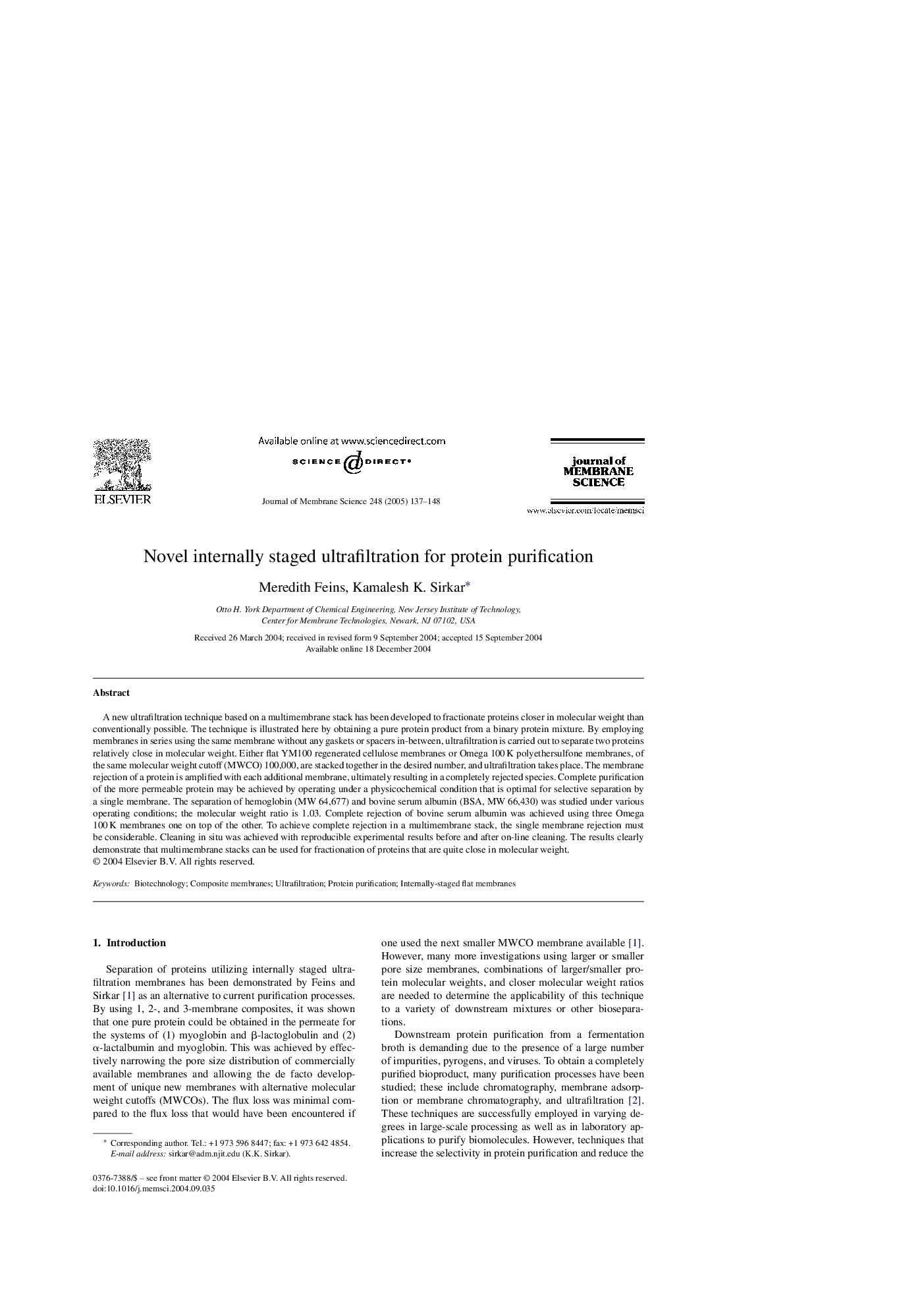| Article ID | Journal | Published Year | Pages | File Type |
|---|---|---|---|---|
| 9685085 | Journal of Membrane Science | 2005 | 12 Pages |
Abstract
A new ultrafiltration technique based on a multimembrane stack has been developed to fractionate proteins closer in molecular weight than conventionally possible. The technique is illustrated here by obtaining a pure protein product from a binary protein mixture. By employing membranes in series using the same membrane without any gaskets or spacers in-between, ultrafiltration is carried out to separate two proteins relatively close in molecular weight. Either flat YM100 regenerated cellulose membranes or Omega 100Â K polyethersulfone membranes, of the same molecular weight cutoff (MWCO) 100,000, are stacked together in the desired number, and ultrafiltration takes place. The membrane rejection of a protein is amplified with each additional membrane, ultimately resulting in a completely rejected species. Complete purification of the more permeable protein may be achieved by operating under a physicochemical condition that is optimal for selective separation by a single membrane. The separation of hemoglobin (MW 64,677) and bovine serum albumin (BSA, MW 66,430) was studied under various operating conditions; the molecular weight ratio is 1.03. Complete rejection of bovine serum albumin was achieved using three Omega 100Â K membranes one on top of the other. To achieve complete rejection in a multimembrane stack, the single membrane rejection must be considerable. Cleaning in situ was achieved with reproducible experimental results before and after on-line cleaning. The results clearly demonstrate that multimembrane stacks can be used for fractionation of proteins that are quite close in molecular weight.
Related Topics
Physical Sciences and Engineering
Chemical Engineering
Filtration and Separation
Authors
Meredith Feins, Kamalesh K. Sirkar,
